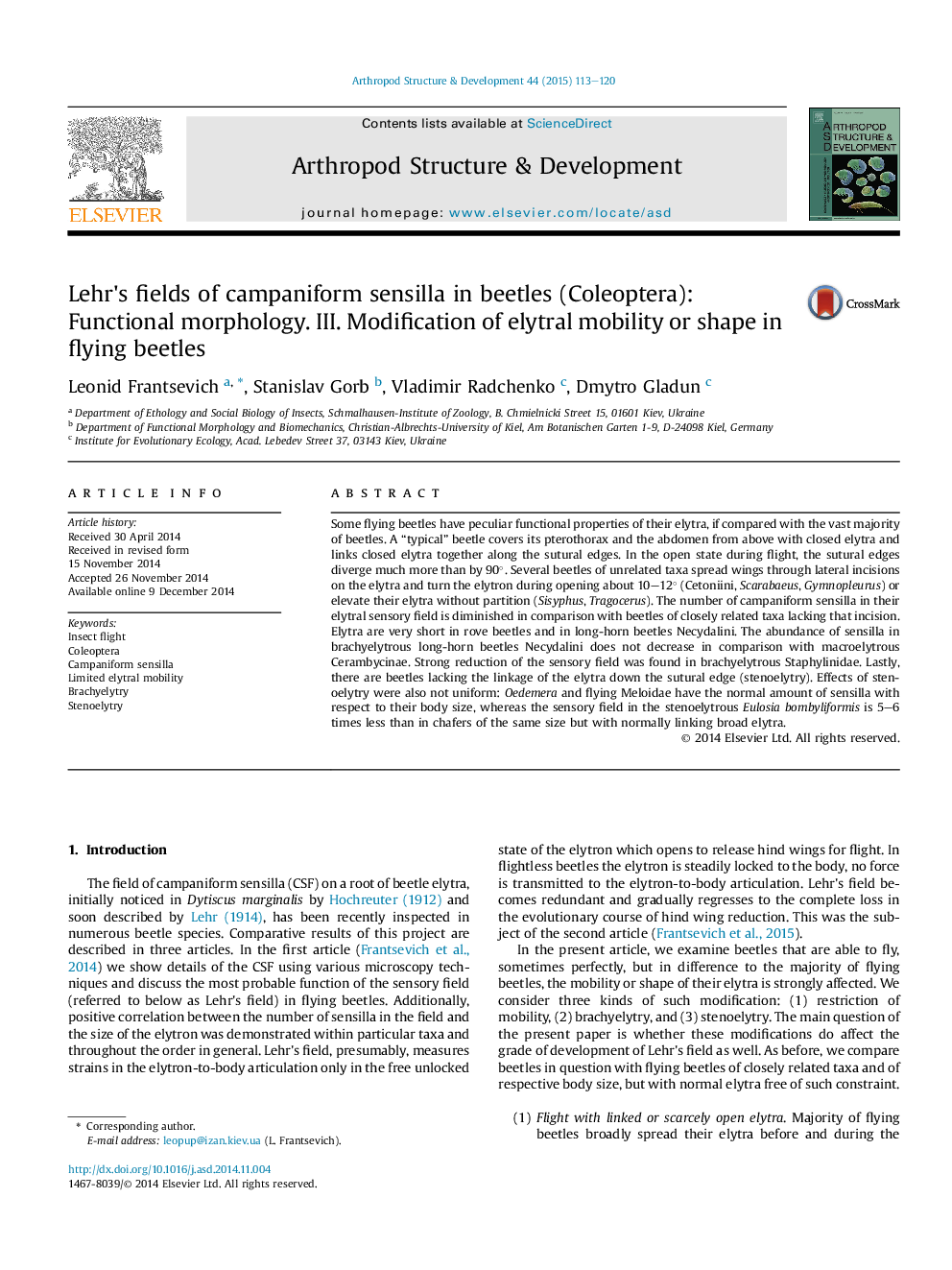| Article ID | Journal | Published Year | Pages | File Type |
|---|---|---|---|---|
| 2778626 | Arthropod Structure & Development | 2015 | 8 Pages |
•Number of sensilla is small in beetles with side incisions on the elytra.•Sensilla are abundant in brachyelytrous Necydalini, but scarce in Staphylinidae.•The effect of stenoelytry without the sutural lock varies in different beetle taxa.
Some flying beetles have peculiar functional properties of their elytra, if compared with the vast majority of beetles. A “typical” beetle covers its pterothorax and the abdomen from above with closed elytra and links closed elytra together along the sutural edges. In the open state during flight, the sutural edges diverge much more than by 90°. Several beetles of unrelated taxa spread wings through lateral incisions on the elytra and turn the elytron during opening about 10–12° (Cetoniini, Scarabaeus, Gymnopleurus) or elevate their elytra without partition (Sisyphus, Tragocerus). The number of campaniform sensilla in their elytral sensory field is diminished in comparison with beetles of closely related taxa lacking that incision. Elytra are very short in rove beetles and in long-horn beetles Necydalini. The abundance of sensilla in brachyelytrous long-horn beetles Necydalini does not decrease in comparison with macroelytrous Cerambycinae. Strong reduction of the sensory field was found in brachyelytrous Staphylinidae. Lastly, there are beetles lacking the linkage of the elytra down the sutural edge (stenoelytry). Effects of stenoelytry were also not uniform: Oedemera and flying Meloidae have the normal amount of sensilla with respect to their body size, whereas the sensory field in the stenoelytrous Eulosia bombyliformis is 5–6 times less than in chafers of the same size but with normally linking broad elytra.
Graphical abstractFigure optionsDownload full-size imageDownload as PowerPoint slide
